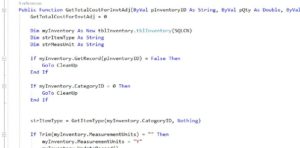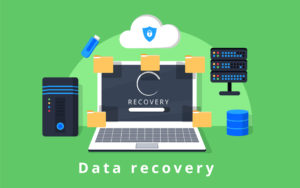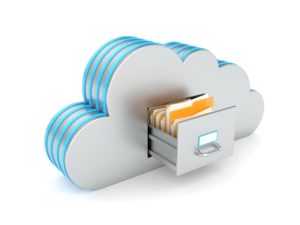Malware comes from everywhere. You can pick it up from files, websites, interesting PDFs and so much more. Everyone is subject to a little malware and it’s understood that professionals who must access the internet for work will inevitably get some kind of malware on their work computers. That’s just the world we live in now, and businesses have long since adapted to the idea of Backup Recovery when cybersecurity is never 100%.
But as a professional living your day-to-day, it’s also important to know how to identify malware when you pick it up. Unlike when the trend started back in the 90s, modern malware is pretty darn sneaky. It doesn’t cover your screen in ads anymore or obviously open and close programs. Instead, it eats your processor speed and steals your data in the background. Sometimes for months before you realize.
Today, we’re here to share four of the most tell-tale signs that there’s malware hiding on your work computer and it’s time to do a little BDR with a fresh operating system.
Unusually Slow Performance with Offline Programs
Internet speed ebbs and flows, even in the most high-speed office or the quietest residential neighborhood. You may expect the occasional slow performance due to internet speeds (or you may not) but slow offline programs are a completely different story.
You know your computer. You know how fast it can handle the offline programs you use regularly. Things that don’t need the internet like a simple calculator, word processor, or image editor. If you’re getting serious lag and latency when you should have your computer’s whole processing power to yourself, this can indicate that you’re sharing power with malware.
A malware program may be able to hide its install location or running processes. But it can’t hide the resources it uses up.
Unseen Programs that “Refuse to Close” When You Reboot
When you reboot your computer, Windows will tell you if there’s a program that didn’t close out smoothly with the ShutDown command. Often, this is just a Chrome browser you didn’t fully close. But sometimes, it’s a surprise. Your computer may tell you that Internet Explorer or Microsoft Edge are still running when you never use those programs. It might tell you something called xvb55t is running and won’t close, and that is a definite tip-off.
If something is opening programs invisibly on your computer and won’t close when you shut down… that’s malware. No two ways about it. And it’s time to fully wipe your system, because it’s hidden deep.
Your Web Extensions Aren’t Working as Expected
So often, web extensions are the cause or target of a malware attack. Most modern professionals run with some kind of ad blocker on. If you use Adblock plus, for example, it tends to pop open an extra tab nearly every time you open a new browser window. Especially from a new or recently cache-cleared device. If that browser window stops popping open, or if any of your other extensions start acting in an unusual or suspicious fashion, malware is often the cause.
You may want to clear your caches, prune your unused extensions, and possibly recover the entire computer to make sure no malware files have been hidden on your computer.
After a Scan/Clean/Reboot, You Still Scan Trackers
If you have a manual scanning program like CCleaner or something similar and you suspect there’s malware on your computer, there’s one sure way to check just how virulent that malware really is.
Start with a scan-clean cycle. Scan for trackers and junk and clear them. These could be anything and are often just clearing your temp files of web-junk that could be slowing you down. Reboot your computer, then do another scan. Find new trackers? Find new junk? There’s malware adding malicious crud to your computer as soon as it gets a chance. Also, watch your scanned-for and threat-eliminated results. If the scanner says 1 tracker was found, but it eliminated 3 trackers by the end-report, those trackers were added while the sweep-and-clear was ongoing.
You not only have malware, you have seriously aggressive malware and BDR is the best option.
Find malware on your computer? Have a really intense suspicion that there’s malware lurking? Now is the time to use your company’s backup recovery plan or get in touch with your IT help desk for guidance on how to fully wipe and safely restore your work computer. For more cybersecurity, backup recovery, and malware protection insights, contact us today!



